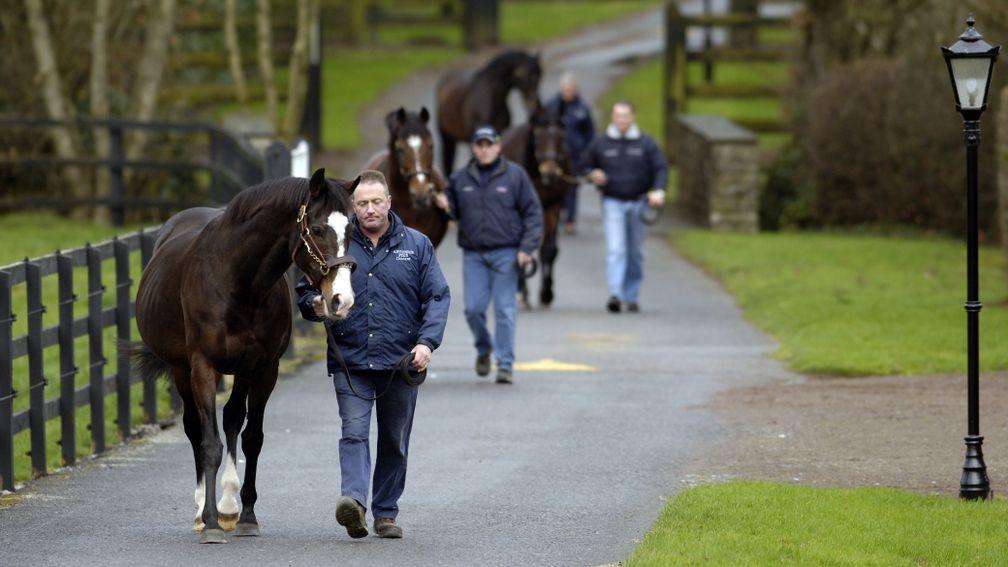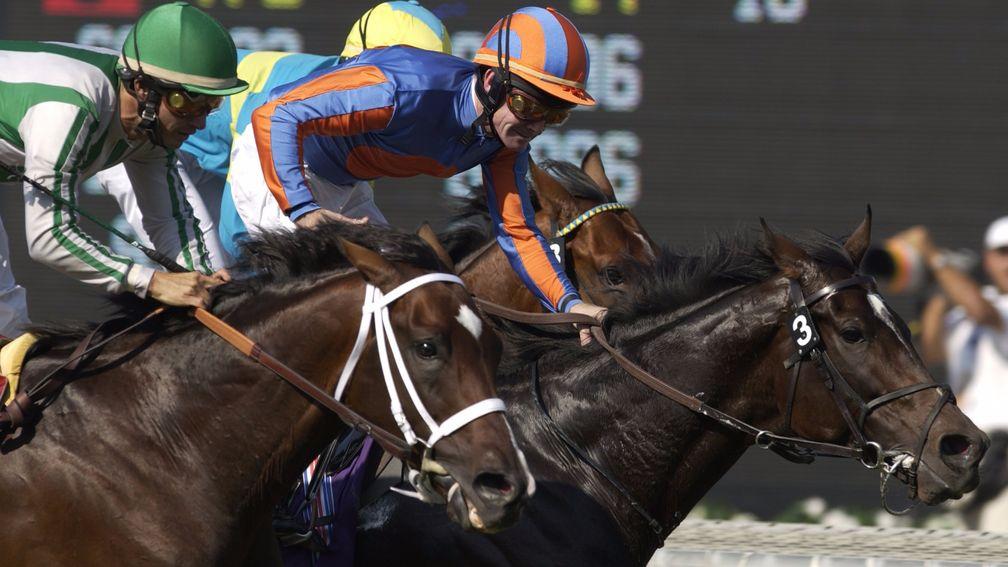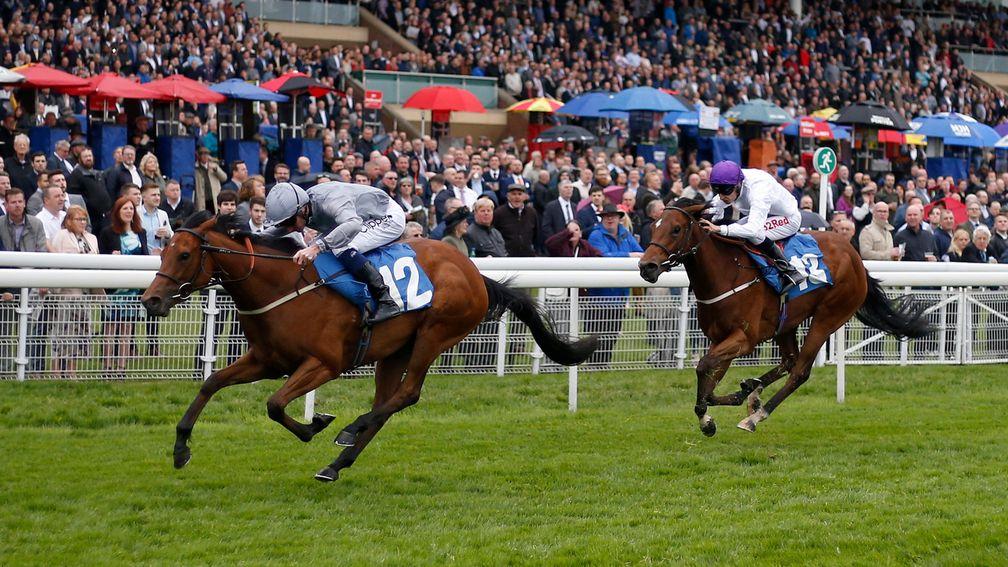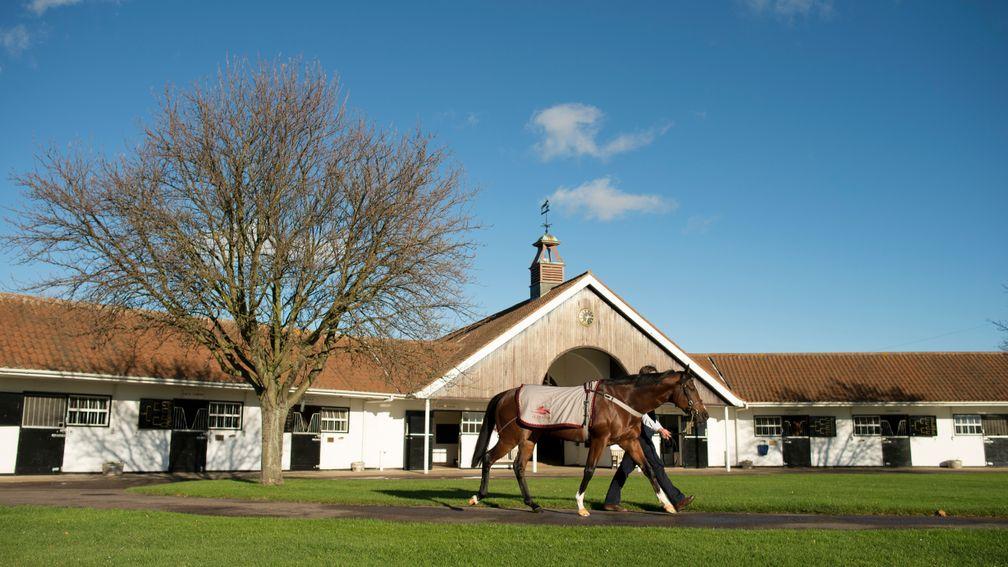High Chaparral signing off in style
Martin Stevens on the final crop of a lamented stallion

For seven years between 2004 and 2011, the Coolmore stallion boxes contained the foremost European-based sire of modern times, Sadler's Wells, and three indisputably outstanding sons who would replicate their brilliance in their second careers at stud: Galileo, Montjeu and High Chaparral.
This was one of the most illustrious chapters in Coolmore's history, and Edward Whitaker's 2007 photograph of the father leading his sons – the breeding enthusiast's equivalent of Marilyn Monroe standing over the New York subway grate or Albert Einstein mischievously sticking his tongue out – is one of the treasured exhibits in the stud's museum.
Colic
Agonisingly, bloodstock's belle epoque did not last nearly as long as might have been hoped. Sadler's Wells spent three years in retirement before passing away at the grand old age of 30 in 2011, but no such happy ending awaited Montjeu, who succumbed to septicaemia aged 16 less than a year later; or High Chaparral, who was put down during exploratory colic surgery at 15 in 2014.
That leaves Galileo as last man standing. Perhaps he will play the role of patriarch in a new golden era for Coolmore, as we discover whether his Classic-winning sons and studmates Australia, Gleneagles, Ruler Of The World and The Gurkha will flourish as sires.
On some measures High Chaparral – who has his final two-year-old runners in the northern hemisphere this season – did not quite match the achievements of his sire's other heirs in the breeding shed in Europe. He has sired 18 top-level winners, compared with Montjeu's 31 and Galileo's 66 and counting. Nor has he supplied a British or Irish Classic winner, with Golden Sword, High Heeled, Lady Lupus and Unsung Heroine doing best with podium finishes.

In other respects, though, High Chaparral outstripped the other two. In the brain-twisting idiosyncrasies of sires' records across the hemispheres, he fared much better than both in Australia and New Zealand. Ten of his Group 1 winners were conceived down there, including the great So You Think as well as It's A Dundeel and Shoot Out, who struck at the highest level 21 times between them.
If High Chaparral cannot lay a glove on Galileo in terms of extending his influence, he might yet fare better at founding a sire-line than Montjeu.
High Chaparral's top-class miler son Toronado is noted for his good looks, has been well supported at the National Stud and faces the acid commercial test when his first crop appears at this autumn's yearling sales. Another son who scored at Royal Ascot, Free Eagle, stands at the Irish National Stud and his first foals were born this year.
Important
So You Think is emerging as an important sire in the southern hemisphere, with It's A Dundeel standing alongside him in Australia and Free Eagle shuttling too.
The survival of the Montjeu sire-line - on the Flat in Europe, at any rate - had at the start of this season appeared to hang on Camelot, though an unlikely saviour may since have arrived in Pour Moi's Derby-winning son Wings Of Eagles. In fairness to Montjeu, he has had plenty of sons pigeonholed as jumps sires – Pour Moi the latest – and his exceptional ability to pass on slower-maturing Classic talent has not been granted the respect it deserves in an industry where early juvenile form and sprint trips are all the rage.
But that takes us to additional bragging rights for High Chaparral: a 22 per cent winners-to-runners strike-rate with his progeny over five and six furlongs in Britain and Ireland, versus a figure of 15 per cent for Galileo. As for Montjeu, who imparted stamina in spades, don't ask: just three winners from 59 runners over the distance at a clip of five per cent.
Certainly it would be hard to imagine either Galileo or Montjeu getting a runner as fast and precocious as Main Desire. The Michael Bell-trained filly – who likely owes much of her early speed to her dam, a six-furlong winner by Breeders' Cup Sprint hero Orientate – stormed to victory on both starts over the minimum distance this spring, including the Listed Marygate Stakes, before being sidelined by injury.

Main Desire is one of three winners from just four runners in Europe this year from High Chaparral's last juvenile crop, along with a pair of colts who both impressed on Saturday. The Hugo Palmer-trained Curiosity, out of a half-sister to King's Stand Stakes winner Prohibit, gained his second victory in a competitive novice auction stakes at Ascot, while James Bethell's Ulshaw Bridge broke his maiden decisively in a similar race at York.
That record may not stand up to Galileo's eight two-year-old winners to date this season, including Pattern scorers Clemmie and Gustav Klimt. But then it is unfair to measure any stallion against the greatest - and it is also worth assessing the differing opportunities granted to the three sons of Sadler's Wells at Coolmore.
In High Chaparral's first year at stud - 2004, when Galileo's oldest crop had become yearlings and Montjeu's had turned two - he stood at €35,000. That was €5,000 more than Montjeu and the same amount less than Galileo, and he received only a handful fewer Group winners in his book that year than his peers: five, compared with nine for Montjeu and 11 for Galileo.
The percentage of producers of stakes-winners he received (33 per cent) was actually higher than the other two, Montjeu getting 19 per cent and Galileo, 26 per cent. That statistic perhaps illustrates how mares already proven at stud are directed towards new faces to give them the best possible start.

Fast forward to 2011 – the last full season the trio stood together at Coolmore, by which time Galileo and Montjeu had proved themselves Classic sires of the highest calibre – and the number of Group winners High Chaparral covered stood at 12: half the number for Montjeu, and miles behind Galileo on 68.
In High Chaparral's final season at Coolmore in 2014 – the year after Toronado had won the Sussex Stakes – he received six Group winners (just four per cent of his book) to Galileo's 69 (38 per cent). So while he never lacked support at stud, we should perhaps give him a little extra credit for whatever his final crop of 91 two-year-olds might go on to achieve.
We might also pause to consider how he might yet have followed up progeny of the calibre of So You Think, Toronado and even Main Desire, had it not been for his untimely death.
Published on inComment
Last updated
- How Galileo came to redefine the meaning of brilliance in a sire
- We should embrace the Mares' Hurdle - for now and for the future
- Phenomenal Galileo continues to set records in the stallion ranks
- More Than ready to be called a great after Breeders' Cup brace
- Hydrangea only the latest bloom for remarkable Mill Princess dynasty
- How Galileo came to redefine the meaning of brilliance in a sire
- We should embrace the Mares' Hurdle - for now and for the future
- Phenomenal Galileo continues to set records in the stallion ranks
- More Than ready to be called a great after Breeders' Cup brace
- Hydrangea only the latest bloom for remarkable Mill Princess dynasty